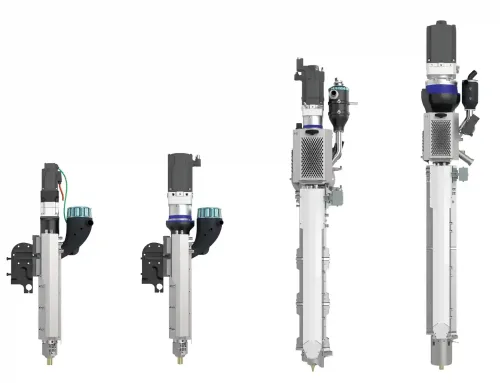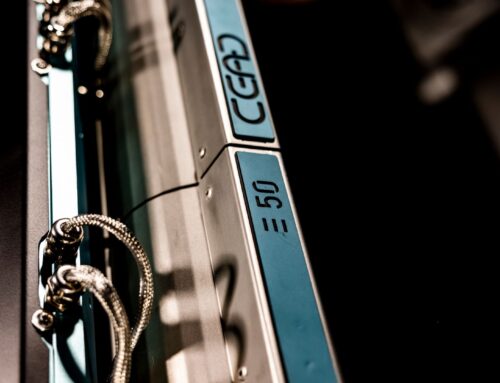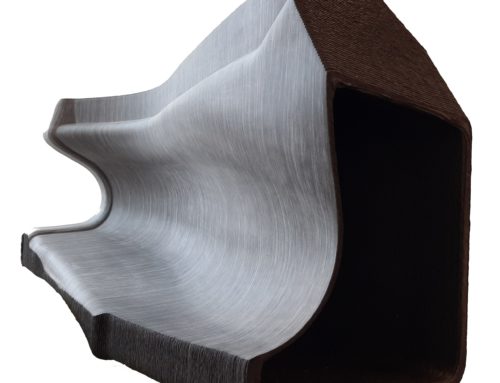Why using a pellet extruder for 3D printing has several benefits compared to traditional filament extrusion
Table of Contents

What are the benefits of using pellet extruders over filament ones?
Complete solutions using pellet extruders developed by CEAD
Pellet extruder for robots and cnc machines
- Stand alone.
- Lightweight and easy integration.
- Compatible with Multiple Materials.
- High production output and low costs.
- High torque.
Our other 3D printing solutions.
Introduction
In the recent past, an average 3D printer was an inefficient and slow industrial fixture that cost a fortune to install and run. Today, technology has drastically evolved and more functional and productive systems are available. Fortunately, these developments have paved the way for affordable large scale 3D printing. Even so, there are still several glitches that limit the productivity of modern 3D printers. So to speak, most of these limitations have everything to do with typical filament extrusion systems. Fortunately, by incorporating an extrusion system that uses plastic pellets instead of filament, most, if not all of these challenges can be avoided.
CEAD: Sharing 3D Printing with the Community
Though 3D printing has been around for some time and is becoming more popular day by day, people are still stuck with inefficient 3D printing systems or are not familiar with the technology at all. To increase awareness, part of what we do at CEAD is educating and exposing people to new trends and products that will make 3D printing affordable, efficient, and easier. We have also partnered with global companies such as Siemens and DSM to manufacture high-performance 3D printers, extruders, and 3d printer accessories with a focus on large scale additive manufacturing. In this post, we are going to compare traditional filament extrusion and the newer pellet extrusion. Plus why pellet extrusion 3D printing has several benefits compared to traditional filament extrusion.
What are the benefits of using pellet extruders over filament ones?
To conclusively answer this question, it is important to understand how the two systems work. In other words, it all boils down to how these two systems extrude raw materials onto the printing panel. Let’s have a look at each.
· Filament Extrusion
Most 3D printers today use filament otherwise known as thermoplastic feedstock as the raw material for making 3D prints. Before the filament can be used, it needs to be manufactured. This process is known as filament extrusion and it involves the conversion of raw plastic pellets into a filament wire. Basically, thermoplastic compounds in the form of materials like ABS or PLA are directly fed into a hopper which pushes them into the barrel of the extruder. At this stage, additives such as UV inhibitors and colorants can be added. The mix is then pushed forward into the barrel where it is melted at desired temperatures to form molten plastic. It is then pushed through a round die to form filament, after which it needs to be carefully wound onto a spool for later use in a 3D printer..
· Pellet extrusion
Unlike filament extruders, pellet extruders use a screwing method to melt and transport pelletized material from the barrel through a heated nozzle (die). Basically, pellets are fed into a feeder inlet. They then are pushed through a barrel with multiple heated sections where they are heated to soften. Once softened to the desired consistency, the screw mechanism creates enough pressure in order to force the softened material out through a nozzle onto a platform, creating 3D prints layer by layer. The process is more complex when compared to filament extrusion but it does have several benefits.
The Benefits of Extrusion 3D Printing?
1. Lower Costs
Nowadays, the most common raw materials for 3D printing are ABS and PLA. In filament extrusion 3D printers, the ABS and PLA pellets have to be transformed into wire filaments before they can be used in a 3D printer to form a 3D print. The problem is, changing these materials into a high-end filament with good and stable dimensions requires expensive production equipment and most of the time additives are being used in making the filament. In other words, you will have to spend more on stabilizers and expensive machines that can produce high-quality filament which is very important for 3D printing. With pellet extrusion, the process of converting materials into filament is avoided making it cheaper and more efficient especially for Large Scale Additive Manufacturing. Typically, weight per cost ratio when using filament is as much 100X. Because there is additional process of producing a filament needed, making filament 3D printing inefficient for large scale 3D printing. Let’s translate that into money.
When a kilo of ABS pellets would cost 2 euro, producing high-end ABS filament would require between 20 to 70 euro /kg for a hobbyist 3D printer and more than 200 euro/kg for industrial 3D printers. This means that the costs of printing a 50kg object out of ABS pellets when using Pellet Extrusion 3D Printing extruder are roughly 100Euros. While using filament extrusion is going to skyrocket to between 1000 euro and 10 000 euro.
2. Higher Speed
When printing large scale 3D objects, speed is always a limitation, especially when using a 3D filament extruder. If speed and material quality of the final product are of great importance, using a Pellet Extruder 3d Printer is arguably the most practical solution. With filament extrusion, the average speed is between 0.01kg/hr. and 0.02 kg/hr. depending on the machine, resolution and the diameter of the nozzle. Robot extruders are capable of printing between 12kg/hr. and 15kg/hr. depending on the material and nozzle being used. This is up to 1500x faster than a small filament 3D printer.
3. Limited Materials
Because filament extruders require a filament. They are limited in the materials used. You need to be able to make a filament out of the material being used. Nowadays you have some filaments containing fibers of carbon or glass. These are hard to process through a filament extruder and are very abrasive. Since pellet extruders don’t require additives, a wide array of materials can be used without compromising the quality of the final products. Using glass or carbon fibres within the thermoplastic pellets is a standard with pellet 3D printing, not something special.
Complete solutions using pellet extruders developed by CEAD
In realization of the problems and limitations of using filament extruders, we have designed and manufactured a wide range of solutions to solve the challenges associated with 3D filament printing. Since extrusion systems have been identified as the biggest challenge, we have focused our efforts on developing several pellet extruders which are incorporated in the AM Flexbot and CFAM prime. These machines can be found on our other website: www.cead-am.com . CEAD has also developed a stand-alone pellet extruder, especially designed for mounting on a robotic arm or CNC milling machine.
Pellet extruder for robots and cnc machines
The robotextruder is a standalone machine purposely designed for companies and businesses that deal with large scale 3D printing and large scale additive manufacturing. This extruder is a product of several years of experience in 3D printing, plastics extrusion, and machinery development. Some of its most distinguishing features include:
1. Stand alone
We have partnered with Siemens to design and manufacture a standalone robot extruder. The entire system is operated remotely via a Siemens touch screen and runs on custom-designed software. A connection between the CNC machine or robot with this extruder is easily established. This makes it possible for our customers to mount the extruder on their robotic arm or CNC machine.
2. Lightweight and easy integration
The extruder is crafted from light material which makes it easy to mount on a wide variety of robotic arms. The design also makes it possible to integrate the extruder with CNC machines and a wide array of robotic arms. Communication between the extruder and the robot or cnc machine can be established by industry standard communication protocols. Allowing for an easy integration of the extruder with industrial machinery and robots.
3. Compatible with Multiple Materials
This extruder is designed to handle a wide array of materials including high-temperature plastics such as Polycarbonate resin, PEEK, and ABS. It is also compatible with carbon filled PPS and glass-filled materials. The fiber length that is typically being used in the pellet extruder made by CEAD is between 0.3mm-2mm with a fiber content of between 10% and 50%. These kinds of values are not achievable with a filament extruder.
4. High production output and low costs
The robot extruder uses a wide array of thermoplastic pellets that don’t need to be transformed into filaments for 3D printing. This means lower operational costs and higher output compared to filament extruding materials.
5. High torque
It uses a Siemens servo motor system to deliver optimum speed, reliability, and stability. The extruder is also fitted with a 20:1 planetary gearbox for extra performance. The robotextruder is capable of printing between 12kg/hr. and 15kg/hr. depending on the material being used. This is up to 1500x faster than a small filament 3D printer. This is also necessary because the print volume is a lot larger as well.
In case you are interested in our pellet extruder, please get in touch through this contact form!
Our other 3D printing solutions
Since 3D pellet printing is just beginning to take off, it is hard to find a high-quality 3D printer ideal for Large Scale Additive Manufacturing and large scale 3D printing. Fortunately, we have developed 2 large scale 3D printers that both use pellet extrusion technology.
1. AM Flexbot: Robot-based 3d printer
The AM FlexBot is a supple 3D based printer that combines the power of the subtractive process (milling) with large pellet format extrusion to produce high-quality molds. It is especially ideal for large scale prototypes and 3d printing composite tooling. For more information please visit: www.cead-am.com
2. CFAM prime: Optimized for thermoplastic composite materials
This machine is purposely engineered for large scale 3D printing, Large Scale Additive Manufacturing, and 3d Printing of Composite Molds. It is manufactured with advanced pellet extrusion technology which facilitates reliability and high printing speeds. This includes a melt pump for controlling material flow during deceleration and acceleration of the extruder. Moreover, it uses a wide array of engineering grade thermoplastic materials which can be combined with short carbon or glass fibers.
Bottom line
As the market for large format 3D printing and Robot Based 3d printing increases, there is a need for companies and businesses that use composite thermoplastic 3D printing for more efficient, affordable, and faster 3D printing. Especially for the production of composite tooling and molds when this technology is being used in combination with CNC machining. Or large scale products and prototypes. Fortunately, shifting from filament to pellet extruders is a perfect way to cut down costs, work faster and more efficiently without compromising the quality of the final product. CEAD offers both complete systems such as the AM Flexbot (CNC machining and printing in 1 machine). The CFAM prime (printing only) and standalone pellet extruder for large format 3D printing. Enabling our customers to build their own large-format 3D printing solution.





